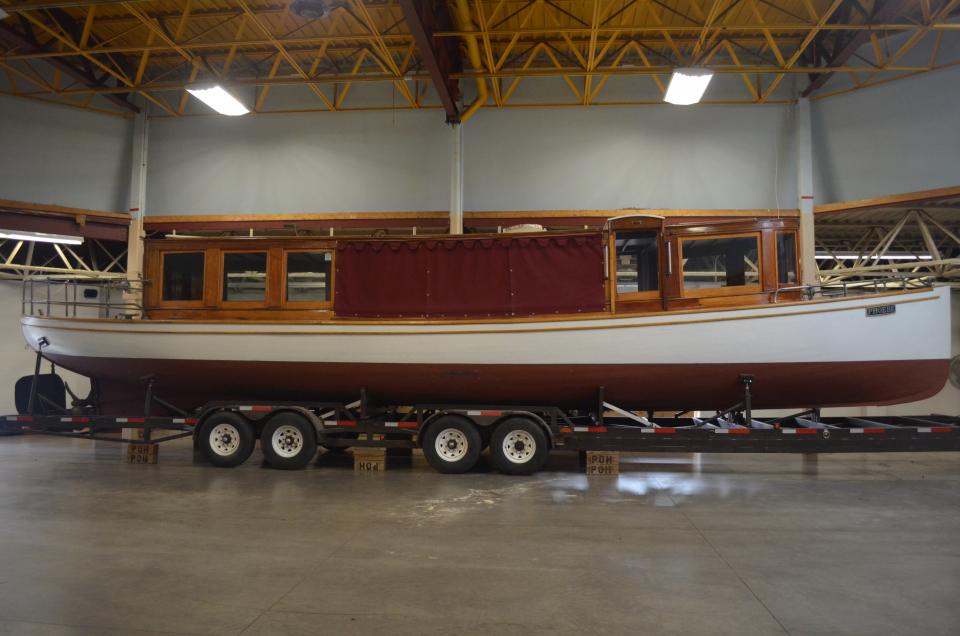
The Phoebe was built in 1914 by Mat Davis of the Davis Dry Dock Company. She is a day boat with a glass-enclosed fore and aft cabin that can seat 10 to 15 people. She has a characteristic profile, including fine bow lines, a canoe-shaped stern, a fore cabin with curved windows, generous fore and aft decks, a centre section with roll-up side curtains and an aft cabin with a toilet and washbasin on the port side. The centre of the boat contains an engine room, consisting of a wood-fired boiler and compound condensing engine. The Phoebe's hull is painted white and the cabins are constructed with varnished mahogany paneling. Deck fittings are nickel-plated.
The Phoebe was named after Phoebe (Stewart) Brashear, wife of Dr. John Brashear, instrument maker and scientist. The couple lived in Pittsburgh, Pennsylvania, U.S.A. and summered at their cottage on Isle Urania, Lake Muskoka, Ontario. They received the Phoebe as a gift from the residents of lake Muskoka in 1914. The Brashears owned the Phoebe until John Brashear's death in 1920. Between 1920 and 1939, little is known of the Phoebe's whereabouts. It was not until Cameron Peck, an American collector residing in Lake Muskoka, acquired the Phoebe in 1939, that records of her location and ownership resume. Peck kept the Phoebe in immaculate condition but was forced to sell her in 1948.
The next owners of the Phoebe were Warren Weiant and Frank Miller. They took her to Lake Erie and installed a Poulson engine. Weiant and Miller owned the Phoebe for approximately five years. Around the mid-1950s, Herman Black from Ohio became the Phoebe's owner and re-installed her original Joy-valve engine. Sometime between 1914 and 1950, owners of the Phoebe also installed a mast. From 1959-1976, A. S. Wickstrom, an engineer from New York State, owned the Phoebe.
In 1978, The Frontenac Society of Model Engineers, spearheaded by Jack Telgmann, retired engineer and the first Curator of the PumpHouse Museum, helped bring the Phoebe to Kingston, securing a down payment for her purchase. She received heritage designation under the Cultural Properties act as a Canadian Treasure. The Phoebe sailed from 1979-1984 in Kingston waters and was then stored in a boathouse with a support cradle designed by Henk Wevers from 1984 to 1998. In 1998 an extensive restoration process of the Phoebe began. Friends of the Phoebe, a group of volunteers in Kingston devoted to her long-term preservation, fundraised and restored the historic steamboat over the next five years.
The Phoebe was produced using an expandable mould, over which steam-bent oak ribs formed the basis of her framework. The Phoebe's keel, post and ribs are made of white oak and her planks are of white southern pine.
